 |
Creativity and Innovation: Personal Creativity (Instructor Guide) |
1.34 |
Creativity is often considered a talent that some people have. Actually, creativity's a skill that everyone can nurture through exercise and practice. You can prepare yourself both mentally and physically to be creative.
In this course you will learn to: prepare yourself mentally and physically to be creative, and use your experiences, innocence, intuition, and sense of adventure to increase your creativity.
This Instructor's Edition of this course includes notes and suggestions to assist you in presenting the material, whether in an in-person classroom setting, or as an instructor-led online or distance-learning course. It also provides you with the answers to questions found in mid-lesson activities, as well as in the quiz that concludes the course. |
 |
Creativity and Innovation: Creativity In Organizations (Instructor Guide) |
1.34 |
Creativity in an organization depends on various factors, such as the distribution of authority, the flow of information, and the culture. Some organizations encourage creative thinking to a large extent, and others discourage it. You can recognize a creative organization from its leaders. A leader who can influence a team and inspire them to work creatively builds a creative workforce. Such teams look at problem solving as a means to develop creativity. Although there are certain organizational situations that can enhance creativity, you should also be aware of the organizational factors and job conditions that can inhibit your creativity.
In this course you will learn to: develop creativity in an organization, and use creativity to generate ideas and solve problems.
This Instructor's Edition of this course includes notes and suggestions to assist you in presenting the material, whether in an in-person classroom setting, or as an instructor-led online or distance-learning course. It also provides you with the answers to questions found in mid-lesson activities, as well as in the quiz that concludes the course. |
 |
Creativity and Innovation: Creativity In Organizations |
1.34 |
Creativity in an organization depends on various factors, such as the distribution of authority, the flow of information, and the culture. Some organizations encourage creative thinking to a large extent, and others discourage it. You can recognize a creative organization from its leaders. A leader who can influence a team and inspire them to work creatively builds a creative workforce. Such teams look at problem solving as a means to develop creativity. Although there are certain organizational situations that can enhance creativity, you should also be aware of the organizational factors and job conditions that can inhibit your creativity.
In this course you will learn to: develop creativity in an organization, and use creativity to generate ideas and solve problems. |
 |
Developing High Quality Inclusion Practices (CDA 8) |
2.00 |
Creating high-quality inclusive programs empowers children with disabilities to learn and thrive alongside their typically developing peers. However, knowledge and skill gaps often hinder educators in implementing effective inclusion practices. This session dives into the essence of inclusion in early childhood settings, fostering awareness and equipping you to start the inclusion conversation. Explore the core principles and best practices to cultivate truly inclusive learning environments for all children. |
 |
Developing Your Professional Philosophy Statement (CDA 6) |
2.00 |
Crafting a professional philosophy statement offers you a powerful avenue to express your core beliefs and values in early childhood education, teaching, and learning. This valuable tool can serve you throughout your career, from job applications to pursuing certifications like the CDA (Child Development Associate) Credential or academic positions. Additionally, it acts as a personal compass, reaffirming the significant roles and responsibilities you wish to fulfill as an educator. |
 |
Building Upward—Primary Assessment |
1.00 |
Course Description: It is often said that experience is the best teacher. Dr. Jack Davidoff is an experienced EMS Medical Director. Paramedic Jason Haag is an experienced fire and EMS provider. The two of them share a few thoughts that prove to be an excellent review of what should and could be done during a standard primary assessment and more. Final Exam: A score of 80% or higher is required to obtain your certificate. You have two attempts to pass this multiple-choice exam. Please take your time to carefully answer each question. |
 |
Generational Differences - Managing The Complexity |
1.00 |
Could dealing with people get any more difficult? Today’s business environment brings many challenges with four different generations working together for the first time. Communication, respect, recognition, retention, interaction with others, and work life balance mean something different to each generation. If not understood and managed effectively workplace conflict, poor communication, low morale, and high turnover can occur. Understand and discover the key values and contributions among these four generations. Each generation provides intrinsic value to an organization. You will learn how to capitalize on the strengths of the Traditionalists, the Baby Boomer’s, Generation X, or the Millennial Generation (Gen Y). By implementing effective strategies for communication, recognition, development, retention, and leadership you will uncover the hidden talents of each generation while minimizing the risk of knowledge transfer. You will learn the key generational differences and similarities in each of these areas. Join us as we share with you some of the many generational challenges in today’s work environment. |
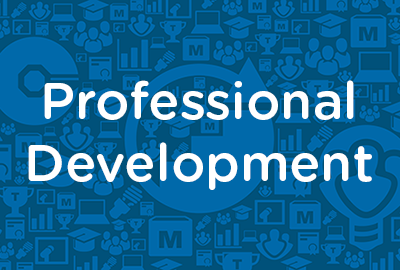 |
Interviewing Skills: Federal Laws |
0.67 |
Congress enacted the Americans with Disabilities Act (ADA) to provide a clear and comprehensive mandate to eliminate discrimination in employment against individuals with disabilities. This Act continues to have long-term benefits for American businesses, since it helps ensure that all workers have an opportunity to maximize their contributions to the productivity of the American economy.
The Immigration Reform and Control Act (IRCA) was signed into law in 1986 because of the large number of illegal aliens working in the United States. The purpose of the Act was to preserve jobs for those who are legally entitled to these, such as U.S. citizens and foreign nationals eligible to work in the United States. The Act is not a negative response to the diversification of the work force, but rather an acknowledgement of it, protecting the rights of both employer and candidate.
In this course you will learn to: define disability and identify the questions that are prohibited by the Americans with Disabilities Act, and hire employees legally under the Immigration Reform and Control Act and use Form I-9. |
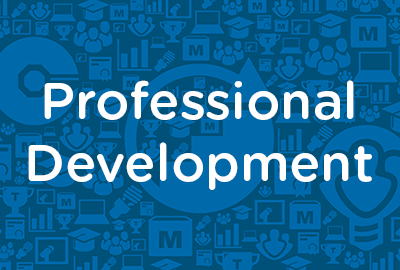 |
Interviewing Skills: Federal Laws (Instructor Guide) |
0.67 |
Congress enacted the Americans with Disabilities Act (ADA) to provide a clear and comprehensive mandate to eliminate discrimination in employment against individuals with disabilities. This Act continues to have long-term benefits for American businesses, since it helps ensure that all workers have an opportunity to maximize their contributions to the productivity of the American economy.
The Immigration Reform and Control Act (IRCA) was signed into law in 1986 because of the large number of illegal aliens working in the United States. The purpose of the Act was to preserve jobs for those who are legally entitled to these, such as U.S. citizens and foreign nationals eligible to work in the United States. The Act is not a negative response to the diversification of the work force, but rather an acknowledgement of it, protecting the rights of both employer and candidate.
In this course you will learn to: define disability and identify the questions that are prohibited by the Americans with Disabilities Act, and hire employees legally under the Immigration Reform and Control Act and use Form I-9.
This Instructor's Edition of this course includes notes and suggestions to assist you in presenting the material, whether in an in-person classroom setting, or as an instructor-led online or distance-learning course. It also provides you with the answers to questions found in mid-lesson activities, as well as in the quiz that concludes the course. |
 |
Conflict and Communication: Why Can't We Be Friends? |
1.00 |
Conflict occurs when we are in relationship with others. In fact, the hallmark of a healthy relationship is not the absence of conflict, but the ability to successfully resolve it. Unfortunately, resolving conflict is not a skill many of us were taught. We'll explore the fundamental causes of conflict and the dynamics that can escalate conflict. Finally, we’ll cover the tools necessary to navigate conflict successfully, including effective communication strategies. |
 |
Observing Children in School-Age Programs |
2.00 |
Conducting and documenting objective, accurate observations of children in school-age programs is an important professional responsibility of school-age care professionals. Two useful tools for structuring observations are developmental checklists and anecdotal records. Both tools provide rich information that help staff learn about children’s development. When school-age care staff conduct regular observations of children’s development, and prepare objective documentation of these observations, they are able to discover the uniqueness of each child, and provide developmentally appropriate guidance and support for all children in the program. |
 |
Course 35: Observing Children in School-Age Programs |
2.00 |
Conducting and documenting objective, accurate observations of children in OST programs is an important professional responsibility of OST professionals. Two useful tools for structuring observations are 1) Developmental Checklists and 2) Anecdotal Records. Both tools provide rich information that help staff learn about children’s development. When OST staff conduct regular observations of children’s development and prepare objective documentation of these observations, they are able to discover the uniqueness of each child and provide developmentally appropriate guidance and support for all children in the program. |
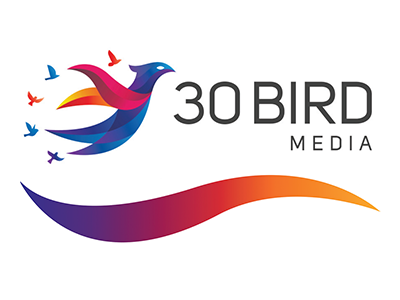 |
CompTIA Security+ Certification - Exam SY0-701 |
40.00 |
CompTIA Security+ Certification SY0-701 provides the basic knowledge needed to plan, implement, and maintain information security in a vendor-neutral format; this includes risk management, host and network security, authentication and access control systems, cryptography, and organizational security. This course maps to the CompTIA Security+ certification exam. Objective coverage is marked throughout the course.
You will benefit most from this course if you intend to take a CompTIA Security+ SY0-701 exam.
This course assumes that you have basic knowledge of using and configuring individual workstations and simple networks. Knowledge equivalent to the CompTIA A+ and Network+ certifications is helpful but not necessary. |
 |
CompTIA PenTest+ Certification - Exam PT0-002 |
40.00 |
CompTIA PentTest+ Certification - Exam PT0-002 provides the knowledge needed to plan and perform penetration tests and other security engagements, using a vendor-neutral format. This includes planning engagements, performing reconnaissance to find vulnerabilities in a target organization, exploiting vulnerable targets, and creating followup reports. This course maps to the CompTIA PenTest+ PT0-002 certification exam. You can download an objective map for the course from www.30bird.com.
You will benefit most from this course if you intend to become a certified penetration tester, or if you are a security professional who wishes to understand cybersecurity from an offensive perspective. This course assumes that you have some applied knowledge of computers, networks, and cybersecurity principles. Knowledge equivalent to the CompTIA Security+ certification is helpful but not necessary.
|
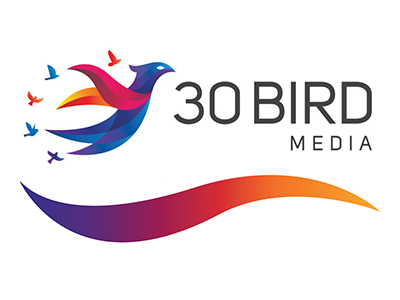 |
CompTIA IT Fundamentals - Exam FC0-U61 |
24.00 |
CompTIA IT Fundamentals - Exam FC0-U61 provides the basic knowledge needed for digital literacy: this includes the fundamental principles of hardware, software, and networks as well as best practices for using all three. This course maps to the CompTIA IT Fundamentals FC0-U61 Exam. Objective coverage is marked throughout the course. You can download an objective map for the series from the 30 Bird website.
Students will benefit most from this course if they intend to take a CompTIA IT Fundamentals FC0-U61, or if they wish to attain an introduction to the core principals and skills of information technology.
This course assumes students have basic knowledge of using a keyboard and a mouse. It does not assume that you have any formal familiarity with computers or the internet. |
 |
CompTIA Cloud+ Certification - Exam CV0-003 |
40.00 |
CompTIA Cloud+ CV0-003 provides the basic knowledge and skills needed to analyze, select, monitor, and protect cloud resources in a vendor-neutral format; this includes vulnerability management, network reconnaissance and monitoring, connecting networks to clouds, cloud migration, secure policies and procedures, host and network security, identity management systems, and incident response. This course maps to the CompTIA Cloud+ CV0-003 certification exam. Objective coverage is marked throughout the course.
This course assumes that students have some applied knowledge of computers, networks, and cybersecurity principles. Knowledge equivalent to the CompTIA Security+ certification is helpful but not necessary. |
 |
CompTIA Advanced Security Practitioner (CASP+) - Exam CAS-004 |
40.00 |
CompTIA Advanced Security Practitioner (CASP+) - Exam CAS-004 provides the knowledge needed to implement security solutions within an enterprise policy framework, using a vendor-neutral format. This includes GRC and vulnerability management programs, applied cryptography, system and network security, identity management, secure development, and incident response. This course maps to the CompTIA CASP+ certification exam. Objective coverage is marked throughout the course. You can download an objective map for the course from http://www.30bird.com.
You will benefit most from this course if you intend to take the CompTIA CASP+ CAS-004 exam.
This course assumes that you have some applied knowledge of computers, TCP/IP networks, and cybersecurity principles. Knowledge equivalent to the CompTIA Security+ or CySA+ certification is helpful but not necessary. |
 |
CompTIA A+ Certification, Core 1 - Exam 220-1101 |
24.00 |
CompTIA A+ Certification, Core 1 - Exam 220-1101 provides the basic knowledge needed to install, configure, and support computer hardware and networking equipment. This includes:
- Applying troubleshooting skills
- Installing, configuring and maintaining PCs and devices for end users
- Understanding the basics of network protocols and infrastructure
- Properly and safely diagnosing, resolving, and documenting common hardware and network issues
- Understanding the basics of virtualization, desktop imaging, and deployment.
This course maps to CompTIA A+ Core 1: Exam 220-1101. You can download an objective map for the course from www.30bird.com.
This course assumes that you have basic computer knowledge. |
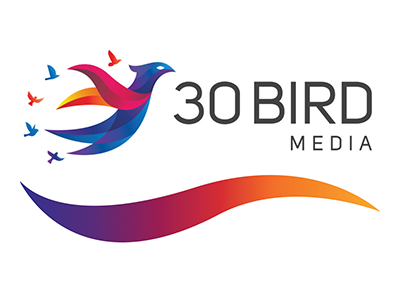 |
CompTIA A+ Certification, Core 2 - Exam 220-1102 |
24.00 |
CompTIA A+ Certification Core 2 - Exam 220-1102 provides the basic knowledge needed to install, configure, and support computer software and implement networking. This includes:
- Installing, configuring, and maintaining computer equipment, mobile devices, and software for end users
- Servicing components based on customer requirements
- Understanding networking basics and applying basic cybersecurity methods to mitigate threats
- Properly and safely diagnosing, resolving, and documenting common hardware and software issues
- Applying troubleshooting skills and providing customer support using appropriate communication skills
- Understanding the basics of scripting, cloud technologies, virtualization, and multi-OS deployments in corporate environments
This course maps to the CompTIA A+ Certification Core 2: Exam 220-1102 objectives. An objective map is available for download.
This course assumes that you have basic computer knowledge. |
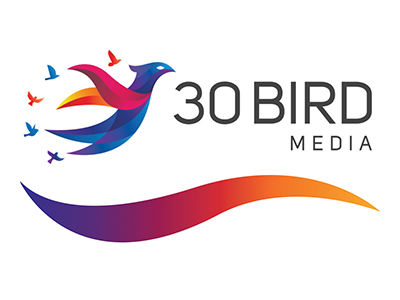 |
CompTIA A+ Certification Comprehensive - Exams 220-1101/220-1102 |
40.00 |
CompTIA A+ Certification Comprehensive - Exams 220-1101/220-1102 provides the basic knowledge needed to install, configure, and support computer software and implement networking. This includes:
- Applying basic methodical troubleshooting skills as an IT technician
- Identifying motherboard and CPU components, installing or replacing them, and troubleshooting their functions
- Identifying power supply functions and connectors, installing them into a PC, and troubleshooting power issues
- Configuring BIOS/UEFI firmware, identifying and installing RAM, and troubleshooting memory issues
- Comparing internal and external expansion buses on a computer, installing internal cards, and identifying expansion cables and connectors
- Distinguishing between physical storage technologies, installing drives, and troubleshooting storage problems
- Connecting, configuring, and troubleshooting common input-output devices
- Describing common printing technologies, installing and maintaining printers, and troubleshooting printing issues
- Identifying client operating system features, installing Windows and application software, and working with scripts
- Managing and troubleshooting operating systems using built-in administrative tools, such as the Windows Control Panel, Windows Settings, and command-line utilities
- Describing network principles, network devices, and internet connection technologies
- Identifying and categorizing network cables and connectors
- Configuring and troubleshooting issues related to TCP/IP and other network protocols
- Describing common wireless networking standards and encryption methods
- Configuring and troubleshooting problems with Windows resource sharing and network connections
- Identifying and using virtualization technology and cloud computing services
- Identifying types of mobile devices and operating systems, and configuring and troubleshooting mobile devices
- Recognizing common cybersecurity threats and the security controls which are used to reduce risk
- Identifying and using security features built into operating systems, as well as security hardware and software used on workstations and networks
- Securing workstations and mobile devices against security risks, and troubleshooting common security issues such as malware infection
- Applying best practices in IT operations, including policies, documentation, ticketing systems, incident response, and data backups and recovery
This course maps to the CompTIA A+ Certification 220-1101 and 220-1102 certification exams. You can download an objective map for the course from 30bird.com.
This course assumes that you have basic computer knowledge.
For exam practice, use the separate Exam Preps for exams 220-1101 and 220-1102:
- CompTIA A+ Core 1 220-1101 Exam Prep
- CompTIA A+ Core 2 220-1102 Exam Prep |
 |
Compressed Gas Safety |
0.75 |
Compressed gases are a convenient resource for many different jobs and activities. This convenience comes along with potential risks that can be remedied through safety measures and practices. This course covers the use of compressed gases and safety measures/practices for compressed gases.
It is just one of many health and safety courses we offer. This course will prepare you to safely handle compressed gases in any situation. |
 |
Explorando la continuidad de las tareas de desarrollo de niños en edad escolar de 5 a 12 años (Spanish) Exploring the Continuum of Developmental Tasks of School-Age Children from 5 to 12 |
1.25 |
Comprender la continuidad del desarrollo continuo entre las edades de 5 y 12 años proporciona la base para planificar e implementar programas extracurriculares exitosos. Cuando el personal conoce y comprende las tareas de desarrollo de los niños en edad escolar, puede trabajar con los niños y colegas para diseñar ambientes efectivos, planificar actividades atractivas, establecer expectativas y límites apropiados y guiar el comportamiento de los niños de manera efectiva.
Understanding the continuum of ongoing development between the ages of 5 and 12 provides the foundation for planning and implementing successful after-school programs. When staff know and understand the developmental tasks of school-age children, they can work with children and colleagues to design effective environments, plan engaging activities, set appropriate expectations and limits, and guide children’s behavior effectively. |
 |
Strategic Decision Making: Complex Decisions (Instructor Guide) |
1.34 |
Complex decisions are influenced by many factors. Such decisions are difficult to make, because you might not know how various options will turn out when implemented. Although many forces have an effect on your decision, only some of them are likely to have a real impact. The secret of success is to isolate the essential variables that affect the outcome of the decision. You can build scenarios to test different sets of assumptions, and determine the assumptions that are controlling factors versus the ones that are nonessential.
Planning a decision scenario improves your options. It helps you test a variety of assumptions to gauge their impact and to determine which one is the best. When planning decision scenarios, you should identify the certainties, uncertainties, and trends that might affect your decision. Use this information to build multiple decision scenarios that can indicate the possible consequences of the decisions you make today.
In this course you will learn to: create scenarios by using the extremes method and the driving forces method, and manage linked decisions and follow the guidelines for making linked decisions.
This Instructor's Edition of this course includes notes and suggestions to assist you in presenting the material, whether in an in-person classroom setting or as an instructor-led online or distance-learning course. It also provides you with the answers to questions found in mid-lesson activities, as well as in the quiz that concludes the course. |
 |
Strategic Decision Making: Complex Decisions |
1.34 |
Complex decisions are influenced by many factors. Such decisions are difficult to make, because you might not know how various options will turn out when implemented. Although many forces have an effect on your decision, only some of them are likely to have a real impact. The secret of success is to isolate the essential variables that affect the outcome of the decision. You can build scenarios to test different sets of assumptions, and determine the assumptions that are controlling factors versus the ones that are nonessential.
Planning a decision scenario improves your options. It helps you test a variety of assumptions to gauge their impact and to determine which one is the best. When planning decision scenarios, you should identify the certainties, uncertainties, and trends that might affect your decision. Use this information to build multiple decision scenarios that can indicate the possible consequences of the decisions you make today.
In this course you will learn to: create scenarios by using the extremes method and the driving forces method, and manage linked decisions and follow the guidelines for making linked decisions. |
 |
Employee Performance: Communication |
1.00 |
Communication is effective when a listener clearly understands a speaker’s message. Good communication fosters a productive exchange of ideas while minimizing the possibility of confusion or misunderstanding.
When trying to communicate with a difficult employee, you must be willing to work with that person to correct the problematic behavior. Openly discussing the behavior can help you find a mutually acceptable solution.
In this course you will learn to: communicate clearly and effectively by using verbal and nonverbal communication, and improve your listening skills, and communicate with difficult supervisors and coworkers, take a proactive approach when dealing with difficult employees, and identify types of employee dismissals. |


























